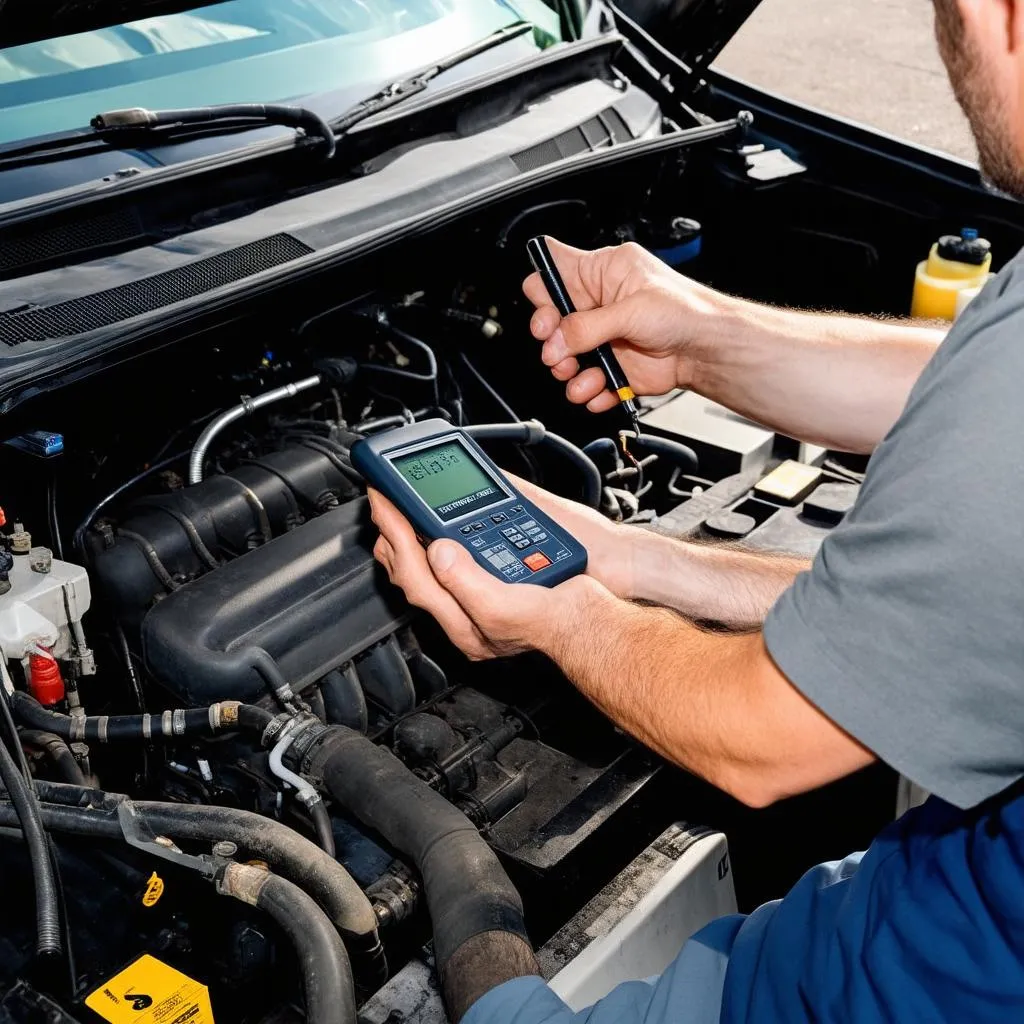Have you ever been cruising down the highway, enjoying the open road, when suddenly your car starts acting up? A flashing light on your dashboard, a sputtering engine, or a loss of power can quickly turn your peaceful drive into a stressful situation. And if you happen to own a 1994 GM vehicle and are encountering an OBD1 code 35, you might be feeling a bit lost.
What is OBD1 Code 35?
OBD1 code 35 is a diagnostic trouble code (DTC) that indicates a malfunction with the Engine Coolant Temperature (ECT) sensor. The ECT sensor is a vital component that monitors the temperature of the engine coolant. This information is then transmitted to the engine control module (ECM), which uses it to regulate engine performance and fuel mixture.
Think of the ECT sensor like a thermometer for your car’s engine. Just like a thermometer tells you if you have a fever, the ECT sensor tells the ECM if the engine is running too hot or too cold. If the ECM receives inaccurate information from the ECT sensor, it can lead to several problems, including:
- Poor fuel economy: The ECM may not be able to adjust the fuel mixture correctly, leading to wasted fuel.
- Reduced engine performance: The engine may run sluggishly or stall if it’s not getting the right information about the coolant temperature.
- Increased emissions: An inaccurate ECT sensor reading can disrupt the engine’s emissions control system.
- Engine damage: In extreme cases, a malfunctioning ECT sensor can cause the engine to overheat and potentially be damaged.
Why Does My 1994 GM Car Have OBD1 Code 35?
There are several reasons why you might be seeing OBD1 code 35 on your 1994 GM vehicle. The most common culprits include:
- A faulty ECT sensor: The sensor itself might be damaged or worn out. This is the most likely cause of the code.
- Open or short circuit in the ECT sensor wiring: A break in the wiring or a short circuit can prevent the sensor from sending accurate signals to the ECM.
- ECM malfunction: While less common, a faulty ECM could be misinterpreting the signals from the ECT sensor.
How to Diagnose and Fix OBD1 Code 35
Diagnosing and fixing OBD1 code 35 usually involves a combination of visual inspection, testing, and troubleshooting. Here’s a step-by-step approach:
1. Visual Inspection:
- Inspect the ECT sensor: Look for any signs of damage, corrosion, or loose connections.
- Check the wiring: Examine the wiring harness leading to the ECT sensor for any visible breaks, chafing, or signs of water damage.
 1994 Gm Obd 1 Code 35 ect sensor" width="1024" height="1024">1994 gm obd 1 code 35 ect sensor
1994 Gm Obd 1 Code 35 ect sensor" width="1024" height="1024">1994 gm obd 1 code 35 ect sensor
2. Testing the ECT sensor:
- Use a multimeter: A multimeter can help you measure the resistance of the ECT sensor. Compare your readings to the manufacturer’s specifications to determine if the sensor is functioning correctly.
- Use a scanner: A diagnostic scanner can help you read the live data from the ECT sensor and verify that it’s sending accurate readings.
 1994 gm obd 1 code 35 scanner
1994 gm obd 1 code 35 scanner
3. Troubleshooting:
- Replace the ECT sensor: If you’ve determined that the ECT sensor is faulty, replace it with a new one.
- Repair the wiring: If you find any damage to the wiring, repair or replace it.
- Check the ECM: If the problem persists, consider taking your car to a qualified mechanic to inspect the ECM.
Frequently Asked Questions:
Q: Can I drive my car with OBD1 code 35?
A: It’s not advisable to drive your car for an extended period with OBD1 code 35. An inaccurate ECT sensor reading can lead to engine problems, especially if the engine overheats.
Q: How much does it cost to fix OBD1 code 35?
A: The cost of fixing OBD1 code 35 can vary depending on the cause of the problem. Replacing the ECT sensor is typically the most common and affordable solution, usually costing between $20 and $50 for the part and a few hours of labor.
Q: What are some other OBD1 codes related to the engine cooling system?
A: Other OBD1 codes that could be related to engine cooling system problems include:
- Code 12: Coolant temperature sensor circuit malfunction.
- Code 22: Coolant temperature sensor circuit high voltage.
- Code 31: Coolant temperature sensor circuit low voltage.
- Code 52: Engine coolant temperature sensor signal out of range.
Q: What if my 1994 GM car still has OBD1 code 35 after fixing the ECT sensor?
A: If you’ve replaced the ECT sensor and you’re still getting code 35, there could be a wiring issue or a problem with the ECM. It’s best to seek the help of a qualified mechanic to diagnose and troubleshoot the problem further.
Conclusion:
OBD1 code 35 is a common problem that can affect 1994 GM vehicles. By understanding the cause of the code and following the proper steps to diagnose and fix it, you can get your car back on the road and running smoothly. Remember, a malfunctioning ECT sensor can lead to serious engine problems, so it’s important to address the issue promptly.
Let us know if you have any further questions or require assistance. We have a team of experts who can help you troubleshoot and fix any issues related to your 1994 GM vehicle.
Contact us via WhatsApp: +84767531508 for 24/7 support.
 1994 gm obd 1 code 35 mechanic
1994 gm obd 1 code 35 mechanic